Ghost's drumming Nameless Ghoul on sweating in Arizona, controversy, and why songs matter
Infernal rhythmatist quizzed
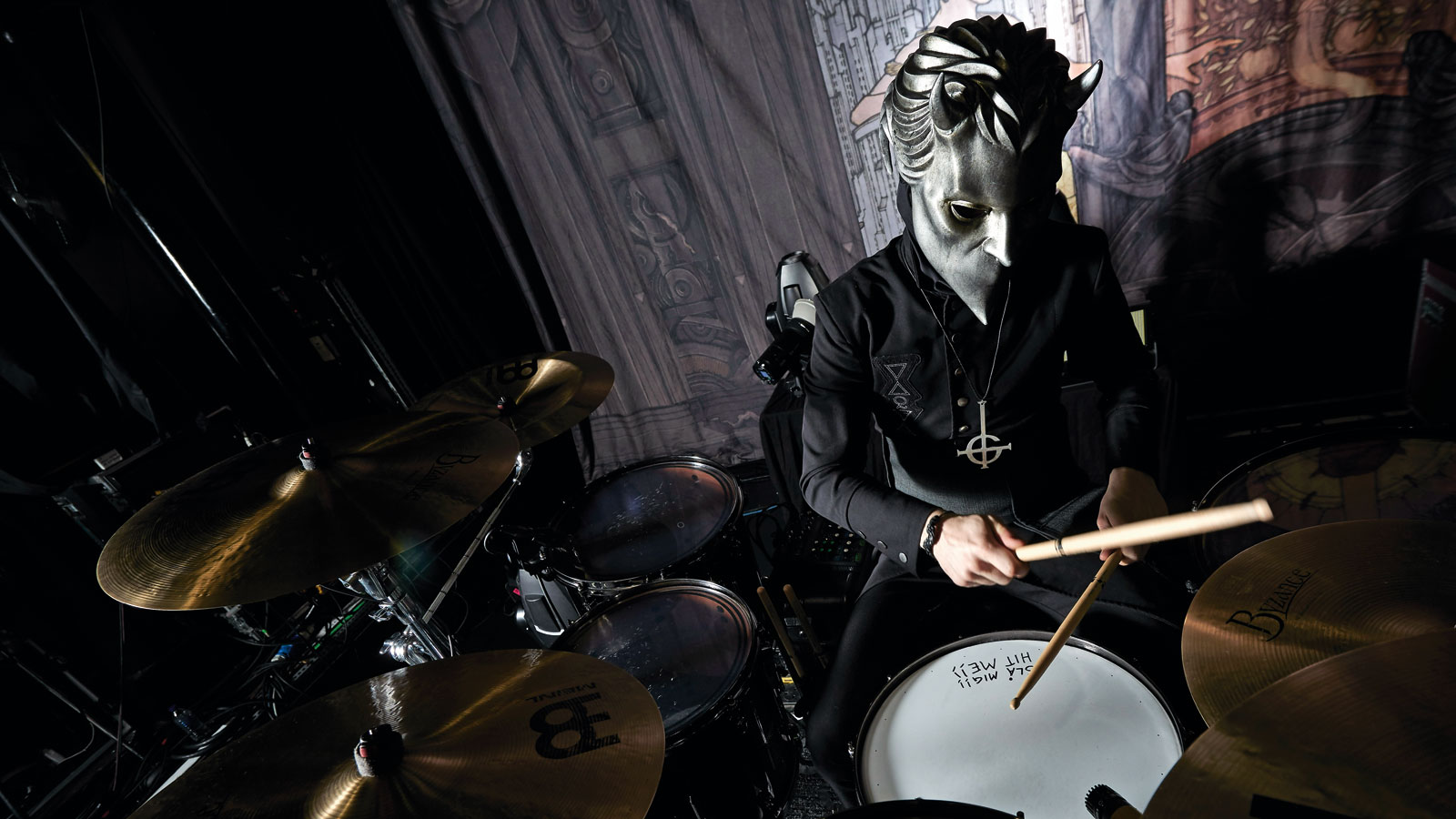
Infernal malevolance
They emerged from the darkest corner of Sweden, to preach their unholy gospel to the world. Fronted by the malevolent presence of Papa Emeritus, Ghost play dark, melodic metal with overtones of doom and progressive rock.
Alongside Papa Emeritus, the band is composed of five Nameless Ghouls who weave their infernal musical spell. Clad in their black robes, their faces obscured by masks, the identities of the Nameless Ghouls remain secret even as Ghost enjoys a rapidly rising profile that includes breaking into the Top Ten on Billboard with their third album Meliora.
Clad in their black robes, their faces obscured by masks, the identities of the Nameless Ghouls remain secret
When we arrive at Koko, London, to interview the drumming Nameless Ghoul before a sold-out show, it is with the expectation of finding him in the midst of some occult, arcane ritual, communing with forces from beyond this mortal coil. Instead, he’s sitting backstage playing the piano.
“I’ve taken some lessons many years ago,” he says about his ivory tickling. “I can play a little guitar and marimba, vibraphone and a little trumpet. I’m not good at it, but I tried different things, I know a little.” This Nameless Ghoul, like the band, hails from the town of Linköping, about two and a half hours south of Stockholm, close to the east coast.
“Where we’re from, the city is quite small, so everybody who plays music knows each other in some way or another,” he says. “It’s very easy to pick out the guys you want to play with and they chose me, so I was lucky.”
The biggest Swedish cities for live music are Gothenburg, Stockholm and Malmo. “But we have a very good music scene in Linköping and also a town a bit further north called Norrköping, a lot of bands from there,” explains the Nameless Ghoul.
Scandinavia has long kept the flag flying for metal and rock, whether that’s Sweden’s tradition of hard rock bands like Hanoi Rocks, or black metal from Norway and Finland. “And the Gothenburg sound is very big with In Flames and all that,” says Nameless Ghoul.
“It’s hard to not be inspired by all those bands. We are friends with a lot of those bands so I think we get influenced by them and they get influenced by us. Sharing and caring.”
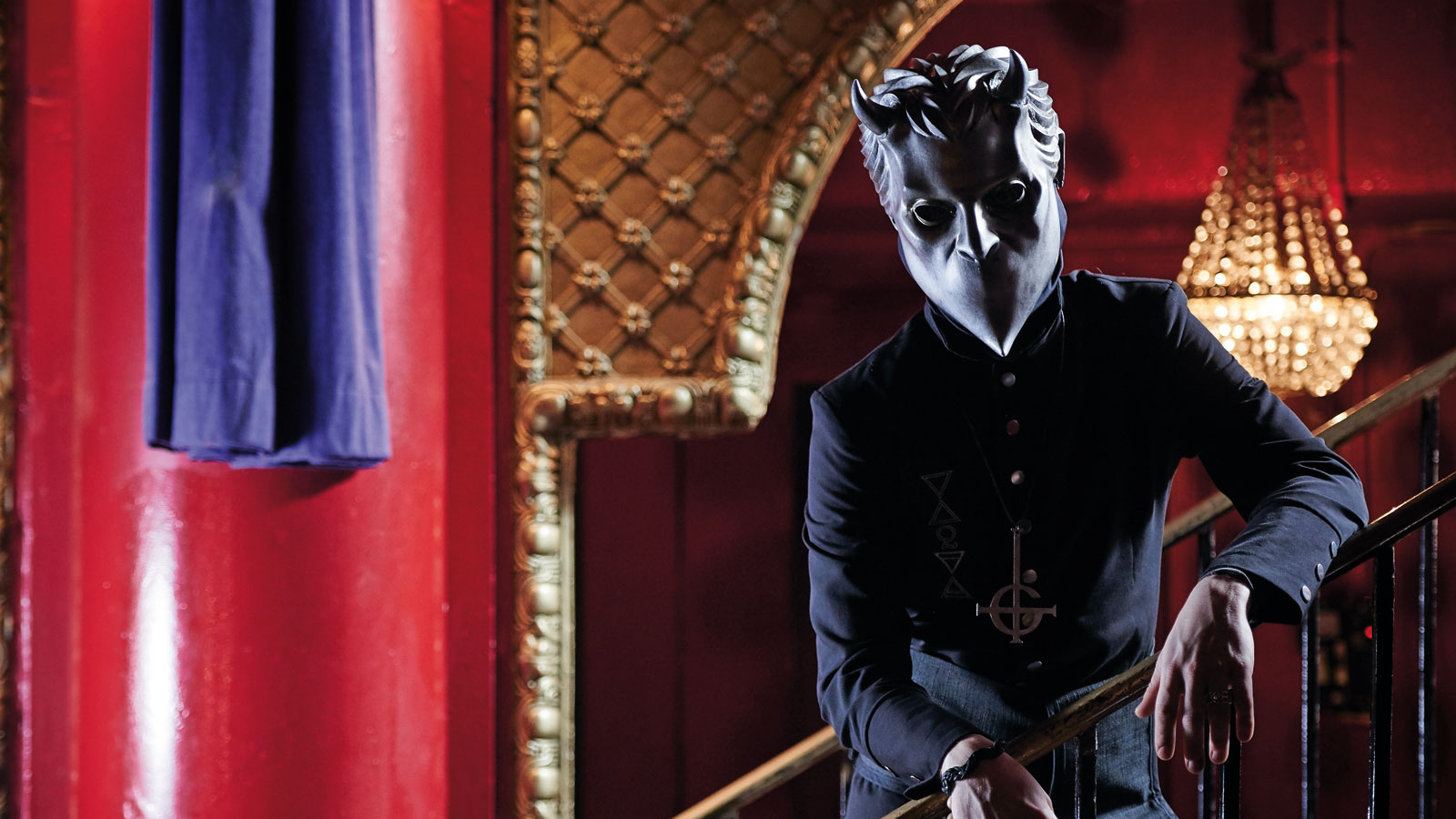
Reckless heroes
However, his first drumming inspirations came from classic rock, beginning with Phil Collins during the Genesis years.
“More the proggy stuff and the big hits also, but first it was the prog stuff. I was big into that,” he says. “My dad always made me listen to Genesis. And also a guy called Mickey Curry who plays with Bryan Adams.
"When I was a kid I loved Bryan Adams so he was the guy for me because he played on all the records. And Peter Criss from KISS, so those are my first three heroes. I still listen to them today.”
Having a parent who loved rock was a big help, particularly when it came to getting a young Ghoul’s first drumset. “My dad bought me my first one, this over-sized Tama Superstar kit,” he says.
"I started my first band when I was 10, we played covers. I’m still friends with those guys.”
“It was very nice actually, in Aqua Blue Marine, five toms and two floor toms, too much but it was fun to just bang around. I had a rehearsal space and for a while I played at home, my parents allowed me to do that. At first I learned on my own but then I had lessons with different local drummers. I started my first band when I was 10, we played covers. I’m still friends with those guys.”
When Ghost came together, they didn’t start off with the masks and robes. “From the start it wasn’t really there but we wanted to do something special and then this idea came up, so we pursued it,” says the Nameless Ghoul.
Unlike many bands that toil for years around dingy pubs and clubs, Ghost always had their sights set on great things. “We never did that actually, we never played those punk shows, so to speak. We tried to make it grand and play good stages right from the start,” says the Nameless Ghoul.
“It’s been ups and downs. I’m not a huge part of the band growing, there are a lot of people who want us to be bigger and who really work hard for us to have come this far, so I thank those guys, and all of us in the band of course.”
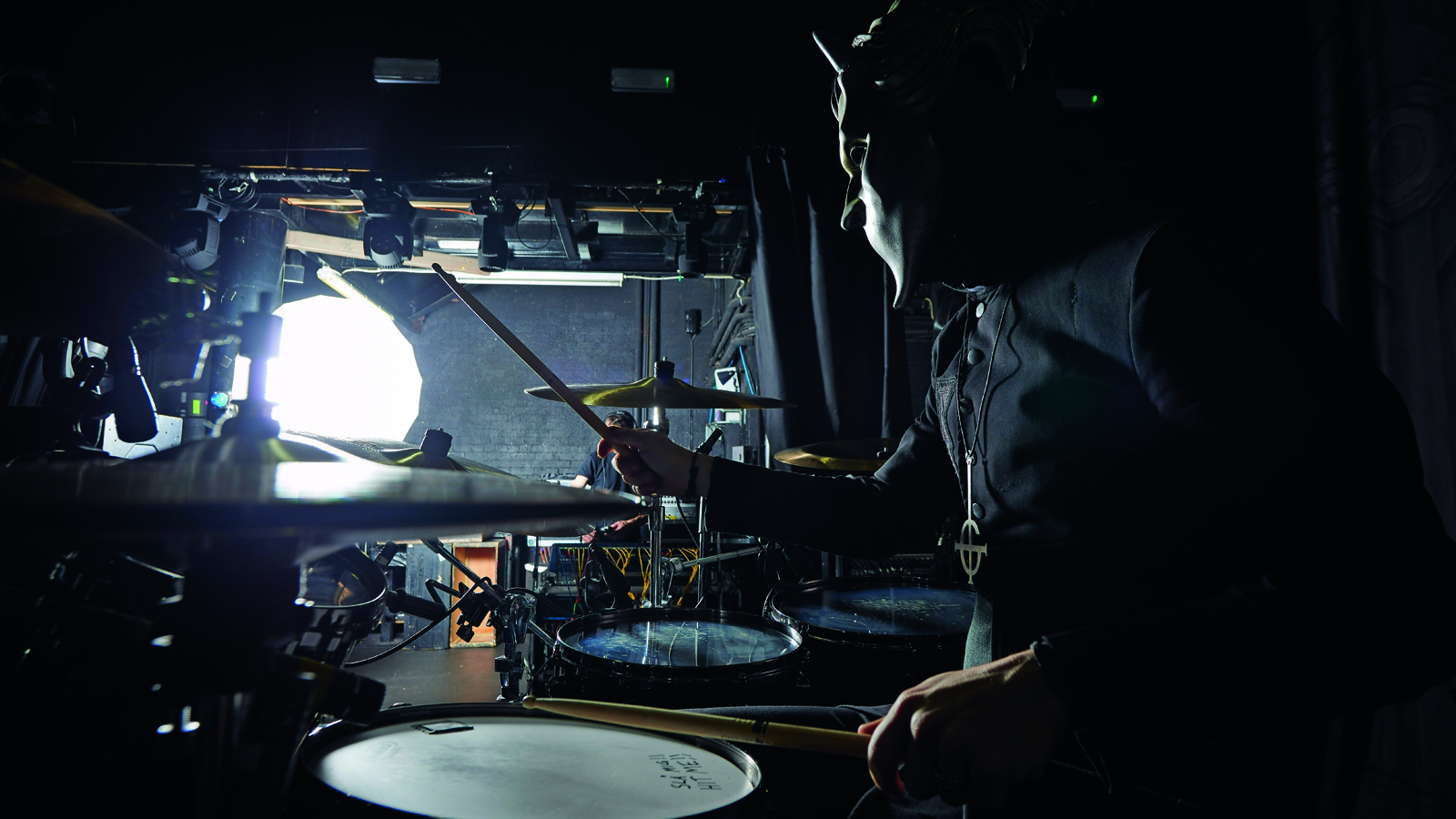
Behind the mask
Rock has a long and rich history of theatricality, from The Crazy World Of Arthur Brown to Alice Cooper, David Bowie to KISS and even Behemoth.
The robes and masks worn by the Nameless Ghouls lend their performances an air of other-worldly menace, but they’re not the most practical from a musician’s perspective. “You get used to it of course but at the start it was a bit weird,” says the Nameless Ghoul.
“You can see straight forwards but it’s hard for your peripheral vision"
“You can see straight forwards but it’s hard for your peripheral vision, so when I want to hit something on my far right I really need to look at it so I don’t miss. I have to be more careful and look around. It’s fun, having the mask on, you go into a character.”
With frontman Papa Emeritus apparently it’s not a question of whether he’s in or out of character. “No, he never breaks character. He is Papa, always,” says the Nameless Ghoul. “You get used to it. He’s an old fart, I like him.”
One of the challenges facing the Nameless Ghouls when they’re on stage is communicating with each other under their masks and cowls. Apparently it’s all in the eyes, according to the Nameless Ghoul. “Eye contact, that’s the easy part, it’s all the other stuff you don’t see,” he says.
“We look at each quite a lot and after a while you start to recognise how they look at you, what they mean when they look at you that specific way. It’s weird but it works.”
One side effect of the costumes is that when not in their garb, the Nameless Ghouls can be anonymous and can mingle with fans without fear of being mobbed. “I think it’s a blessing actually. It’s nice,” says the Nameless Ghoul.
“Of course there are these hardcore fans who know what we look like because they follow us everywhere but the common man doesn’t know. I like that. You can walk about and watch the support band, it’s great.”
The downside is that heavy robes and masks were not designed for summer weather. “In the US we played one festival in Arizona during the day, I was so hot, I almost fainted,” says the Nameless Ghoul.
“That was hard. We’re all wearing black, sweating with the sun. That was a 45-minute show so it was alright, but still sometimes it’s horrible.”
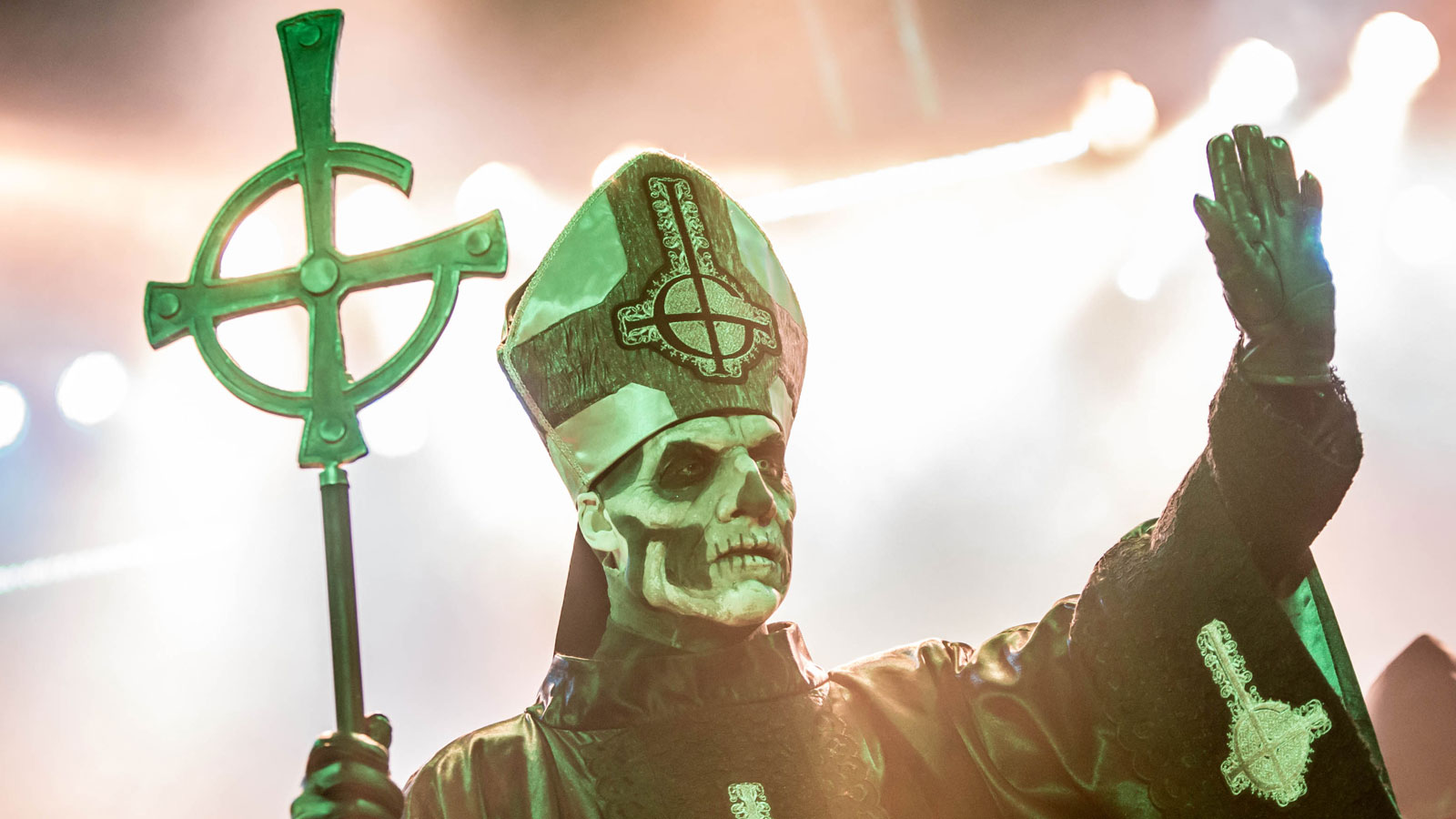
Blasphemy and fun
In both imagery and lyrical subject matter, Ghost explores occult and provocative subject matter. In 2013 they had to push back the release of their second album, Infestissumam, in the United States as four different CD manufacturers refused to manufacture the discs due to the artwork, which featured an illustration of an orgy and an upside-down Christ on the cross.
“Of course it’s good to get attention and have people talking about you, but sometimes they don’t what they’re talking about. Me personally, I don’t have any problems with it, I don’t really care, they can think whatever they want,” says the Nameless Ghoul about their talent for attracting controversy.
The stage show, similarly, is all about atmosphere and imagery, with Papa Emeritus as the anti-Pope. “There are a lot of theatrics in it, of course, but still there is a message to bring out there,” says the Nameless Ghoul. “It’s supposed to be fun. You’re coming to a show to have an experience and it’s fun to look at. We’re starting to get more fun, not so dark, we’re starting to mix it up.”
“It’s supposed to be fun. You’re coming to a show to have an experience and it’s fun to look at."
The controversy hasn’t halted Ghost’s inexorable ascendancy and it didn’t prevent them from making their US television debut on The Late Show With Stephen Colbert in October 2015 to perform their track ‘Cirice’.
“It was the day before Halloween so it was good timing. It turned out great. It was a very fun experience to play that kind of TV show and there are so many people who watch it, so we reached a new audience,” says the Nameless Ghoul, who believes opportunities like that produce a ripple effect that helps spread their infernal gospel beyond their established fan base.
“Sometimes it takes a little time because then it’s on YouTube and people see it a bit later, but it was a little bit of a boom there in people seeing it,” he says, noting that the momentum builds up gradually, “Like a snowball.”
Aside from the problem of finding a CD manufacturer for their second album, Ghost has yet to draw the ire of the conservative Christian pressure groups in the United States. “We have a great following there, we have a lot of fans, but we haven’t really met those crazy Christians yet with the protests because we’ve been a bit under the radar,” says the Nameless Ghoul.
“After The Late Show, there was a bit of a thing going on, on social media, with people who didn’t know who we were but sometimes that’s good. You get recognition. But we haven’t met the crazy ones yet.”
‘Cirice’, the track the band performed on The Late Show, has even snagged Ghost their first Grammy Nomination in the Best Metal Performance category. They’re up against Lamb Of God, Skipknot, August Burns Red, and Sevendust, making Ghost the only non-US act in the running for the Best Metal Performance prize.
“It feels very good. It was a bit surprising but it’s great,” says the Nameless Ghoul. “We’re going to be at the awards show. Hopefully we’ll win but who knows. The other bands are more hard metal, we’re probably the softest, but everybody is happy about it.”

The Ghoul's kit
On the tours for Ghost’s first two albums, the Nameless Ghoul had a stripped down four-piece kit, but it’s slowly growing.
“I’ve expanded it now, more toms, especially because it suits the new album much more,” says the Nameless Ghoul. “I’ve got a Tama of course. Now I’ve got a 12" rack tom, 14" and 16" floor toms and an 18" floor tom on the left, and I’ve one 22" bass drum, single pedal.” Where double-kick workouts have become commonplace, if not ubiquitous, in contemporary metal, Ghost pursue much more of an old school metal vibe.
“It suits our music and we’re a little bit more classic rock. I can’t play double pedal. I’ve tried to develop my speed with one pedal and it suits the music,” says the Nameless Ghoul. The band’s image may be all about the dark and Satanic majesty, but unlike their black metal and death metal countrymen, they still write tunes you can hum.
"It’s a bit more melodic... you’ve got to have songs, not just shredding.”
“It’s a bit more melodic,” says the Nameless Ghoul. “That’s the main thing, you’ve got to have songs, not just shredding.” They must be doing something right – Meliora topped the album charts in both Finland and Sweden, as well as cracking the Billboard Top Ten, exceeding its predecessor Infestissumam which made it into the Top 30.
“Very, very pleased,” is how the Nameless Ghoul describes the band’s reaction to their success. “We hit Number Eight on Billboard, so that was very nice. We got a gold record in Sweden. It’s going great, we’re very happy.”
For Meliora, the quintet worked with producer Klas Ahlund, who is not exactly famed for his work in the metal world. Rather Ahlund has crafted pop hits for the likes of Katy Perry, Kesha, Madonna, Kylie Minogue and Britney Spears.
But Ghost are not strangers to pop. On their 2013 EP, If You Have Ghost, they covered tracks by ABBA and Swedish pop trio Army Of Lovers. The EP in question was produced by Dave Grohl, who also played drums on two tracks.
Rumours have swirled ever since that Grohl has donned the mask and sat in with Ghost live, but the Nameless Ghoul is giving nothing away. “Maybe he did,” is all he offers on that question, before calling Grohl, “One of the greatest guys I’ve ever met and a huge idol for me.”
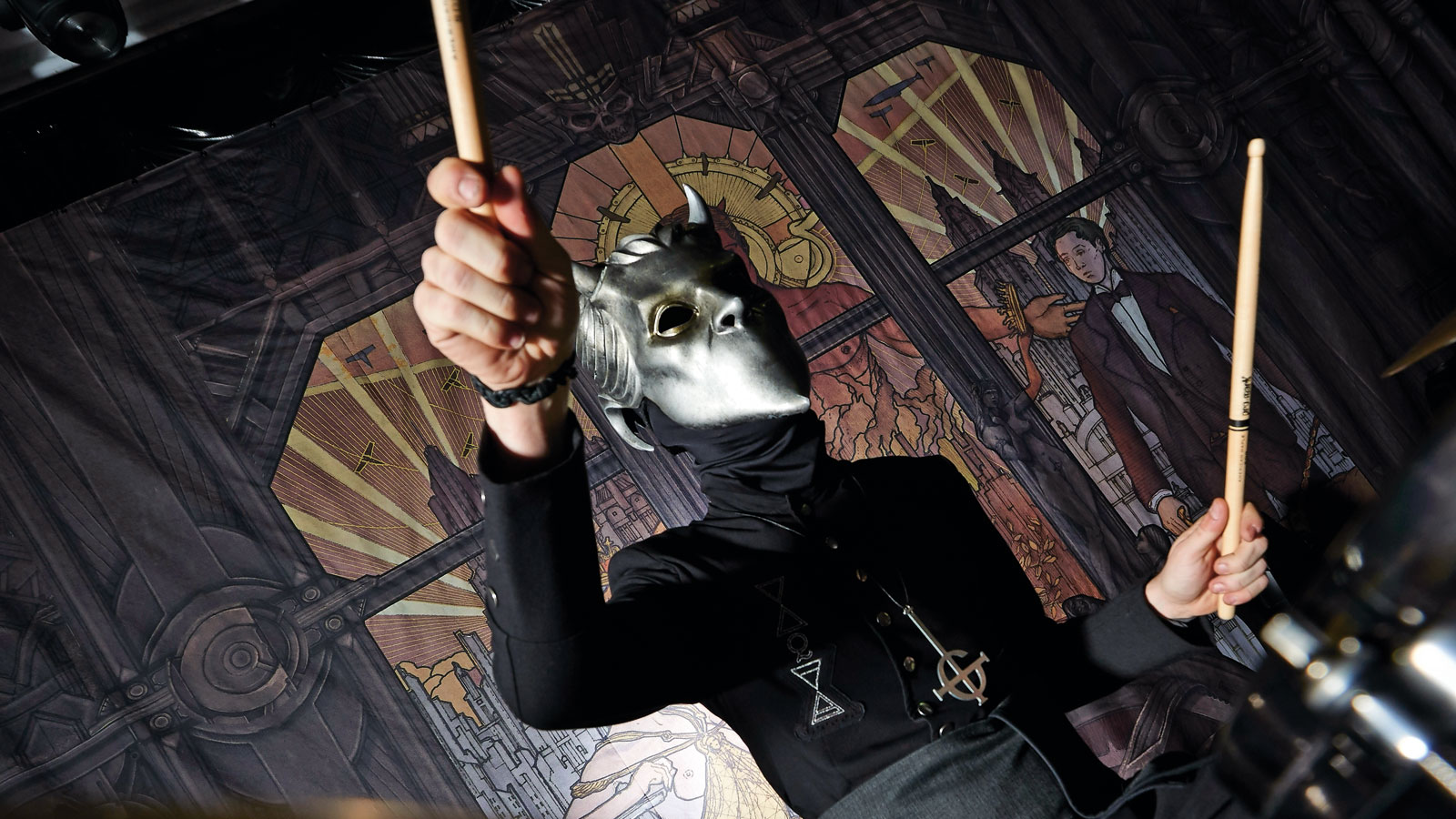
The Making of Meliora
For Meliora, Ghost brought in engineer Adam Kasper who worked with Dave Grohl in Nirvana, Foo Fighters, and on Queens Of The Stone Age’s Songs For The Deaf.
"The drums were recorded in Los Angeles,” says the Nameless Ghoul. “We did a special thing on this album where we recorded cymbals and drums separately so then they put it together afterwards. When you’re recording only cymbals you’re playing on these plastic things instead, and then you’re recording only the drums and you have plastic cymbals. It’s a bit weird but it works.
“We did a special thing on this album where we recorded cymbals and drums separately so then they put it together afterwards."
"No bleeding into the mics from the cymbals. Queens Of The Stone Age did that on Songs For The Deaf. You get quite a unique drum sound out of it. It worked out fine. I’ll see if we do it again or not.”
The band’s growing success meant that the Nameless Ghoul had plenty of time to track his drums. “Two weeks, so no rush there,” he says. But he’s done it under pressure in the past too. “I’ve done one day, 10 songs!” he says. “You get more time now because we can afford it basically. It’s very nice. We rented a lot of vintage drums, Ludwig kits and vintage cymbals, so we tried out different things to get the sound we want. It was nice to play around with this old stuff and in LA they have loads of stuff.”
While the Nameless Ghoul may be a Tama devotee, he still has his own gear collection at home. “It used to be bigger but I couldn’t fit it all in my apartment, so I had to sell some stuff,” he says. “I have two old Ludwig kits from the ’60s, a bunch of snare drums and cymbals everywhere. My girlfriend hates me.”
Meliora brings the guitars back up front to the mix, where Infestissumam was heavier on keyboards. “It has changed I think,” says the Nameless Ghoul about Ghost’s developing sound. “Also because we can choose guys to work with and of course sounds change when you work with different people. Also you want to change the sound a little from record to record, you want each record to have its own identity. If you release five records and everything sounds the same I think that’s quite boring.”
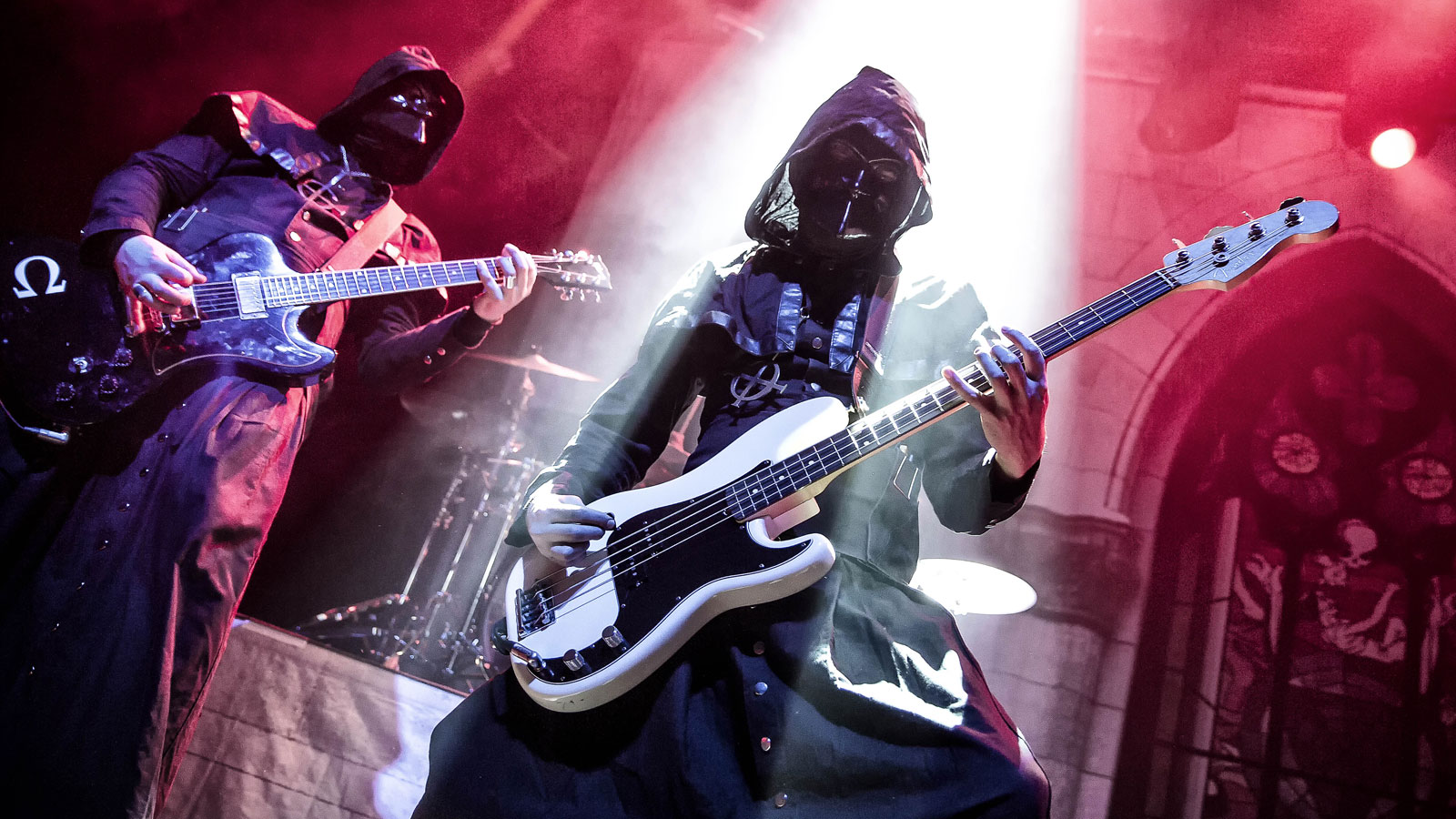
The groovy ghouls
The Nameless Ghoul tracked his parts to demos of the songs with a click track. Using the click meant that the finished drum tracks could be assembled from different takes.
“We goofed around a lot. ’Okay we want a drum fill here, give me 10 different cool drum fills and we’ll see what we pick out,’” he says.
While it has become common practice in modern metal for drummers to lock their bass drums to the rhythm guitar, Ghost’s drummer takes a more traditional approach to the rhythm section following the blueprint laid down by the likes of Bill Ward and Geezer Butler.
“It’s more bass and drums locked in together, I think that’s important,” he says. “There are some parts where I actually play more with the guitars, I do a fill when they do something, but it’s mostly with the bass, like the classics. I think it gets more groove into the music when you do that, so it’s important.”
Where some drummers have to subsequently go back and learn what they did in the studio before they can go out on the road, the Nameless Ghoul says that’s not a problem for him. “What I know, I know,” he says.
“I don’t play anything that’s going to be too hard for me afterwards. If I can do it once then I can do it forever."
“I don’t play anything that’s going to be too hard for me afterwards. If I can do it once then I can do it forever. I’m not that super-technical so it’s not that hard.” And he likes to leave some room for spontaneity on stage.
“For the most part I actually have set fills but some parts I try new things every night,” he says. “Sometimes I feel, ‘Oh, this is perfect, I’ll do this every night now because it suits the song and the feel,’ so you stick with it.”
While they mixed and matched drums in the studio, live the Nameless Ghoul uses a Tama Starclassic with birch/bubinga shells. “They sound amazing. It suits me very well. I love them,” he says. The 18" floor tom which he has added to the set-up on his left adds plenty of oomph to the low end.
“It sounds perfect, very heavy,” he says. “I don’t use it too much. I use that for big boomy stuff when I need extra power.” But he’s not a fan of triggers on the kick drum. “It’s all natural so to speak,” he says about his live sound. “I don’t like triggers actually because there are technical difficulties sometimes when you get double triggering and stuff. I like it to be for real.”
However, despite Ghost’s very classic metal sound, the band does give a nod to modern technology by playing to a click live. “We always have a click track,” says the Nameless Ghoul. “We have some backing tracks, not that much but we have to use a click track. It’s very comfortable to have a click track.
"We always play at the same tempo, because live you get the adrenaline going and then you rush things so I like to play with a click track actually. It’s not like I’m very ‘on’ it, I can play before it or be a little bit after it, but still blend it together so it’s nice. I’ve done it for years so if you don’t play with a click track it’s weird now.”
One common complaint among touring drummers is that they become masters at playing their set-list, but rusty at everything else due to the repetitious nature of the job. However, the Nameless Ghoul says that hasn’t been a problem for him.
“I can still go and do other things without a problem,” he says. “I’m not losing my chops. I practise a bit during soundchecks and stuff and try out things. When I’m at home I usually take one week where I don’t play all because I really need to rest, but then I have to go and play again.”
As to the question of how he wants his drumming to develop in the future, the Nameless Ghoul replies, “I don’t know really. Sometimes you’re developing without even knowing it, it just happens and then you’re like, ‘Oh, this was new. Good, I’ll put that in my box of tricks.’ I don’t really know where I want to go but I know I will end up at that place I want to be anyway. It’s a bit weird, but that progression just happens naturally.”